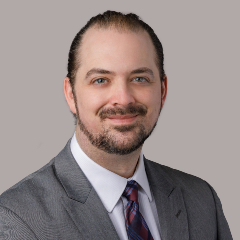Fall 2018 Pulse of Public Health
Members of the UIC SPH community weigh in
The misuse of and addiction to opioids is a serious national crisis. According to the Centers for Disease Control and Prevention, the number of overdose deaths involving opioids was 5 times higher than in 1999. What are effective public health strategies for addressing the opioid epidemic?
Alumni Quotes

As a health disparities researcher and community engagement specialist, I suggest a multi-level approach to get at the systemic issues related to structural violence that perpetuate negative outcomes in some communities more than others. Effective strategies must examine issues at the individual level, community level and the policy level. There also has to be a widespread increase in community education on what opioids are and interventions must address the stigma associated with opioid usage.
| Assistant Research Professor of CommunIty Health ScIences and co-investIgator at the Center for Health EquIty Research ChIcago

I believe one effective strategy is having comprehensive and timely data which enable us to understand the epidemic, provide necessary resources, and evaluate prevention efforts. Furthermore, a multidisciplinary approach that engages necessary stakeholders such as prescribers, public health professionals, and the public is also essential in order to ensure that effective strategies are successfully implemented to combat this epidemic.
| PhD in Epidemiology student

The opioid crisis is a complex and systemic public health issue that requires collaboration across disciplines. Physicians, nurses, pharmacists, social workers, communicators, policy-makers, legislators and more all play important roles in this process. System-wide strategies – like UI Health’s Opioid Task Force – bring together key stakeholders to guide, influence and update protocols and policy that is rooted in the research within our communities.
| Director of CommunIcatIons, Office of the Vice Chancellor for Health AffaIrs

We need to identify how upstream systems factors (like homelessness) and different actors (such as the physician’s prescribing pattern) influence addictive behaviors to opioids. With these different perspectives of this complex problem, we can then design more effective, personalized, and impactful strategic management of physical pain and emotional distress to the different targeted populations.| Clinical Assistant Professor of Health Policy and Administration

Acknowledging the barriers that exist in the communities where this epidemic is taking place is key. Opioid misuse has been a problem for a while; however, there has been a difference in response depending on the community which is being observed. Our ability to properly recognize barriers to why individuals may be falling victim could be an effective strategy for how to address the epidemic.| MPH in Community Health Sciences student and president of the Public Health Student Association

Extraordinary problems require bold steps. To decrease the stigma, suffering, and expense associated with substance-use disorder, Chicago should establish safe-injection sites. Pushing opioid-use into the darkened corners of our city does nothing to promote health- it merely furthers the criminalization of addiction, marginalizes more already pained persons, and accelerates the downward spiral in which too many of our citizens are caught.| MPH in Health Policy and Administration student and co-founder of Chicago Street Medicine